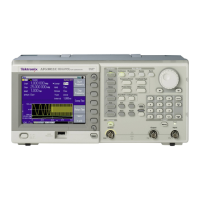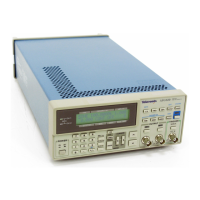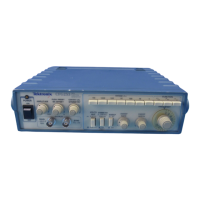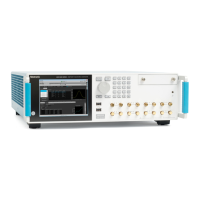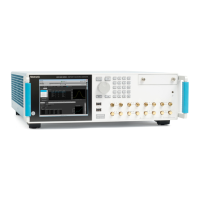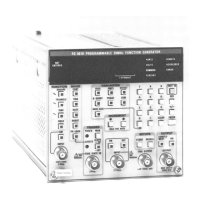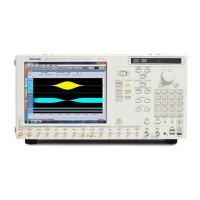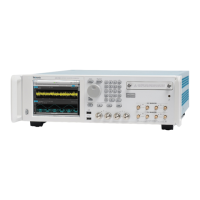HDVG7 module adjustment procedures
5. If needed, pres
s the Default Settings button on the oscilloscope.
6. Press the Channel 1 button on the 80E04 sampling h ead to activate Channel 1.
Part B: Characterize the test system.
1. Connect the equipment as follows:
a. AFG3101 output to 1 m high bandwidth cable.
b. The other end of the cable to a TCA-75.
c. T he TCA-75 to the 80A03 in t he oscilloscope and plug-in.
d. A50Ω cable from the AFG3101 trigger output.
e. The other
end of the 50 Ω cable to the BNC to SMA adapter.
f. The SMA adapter to the 6 dB pad.
g. The 6 dB pad to the trigger direct input on the oscilloscope.
2. Keep the AFG3101 at the same output as in Part A of this test.
3. Set the oscilloscope:
Time/Div: 20 μs
Volts/Div: 50 mV
Averaging: 16
Record Length: 4000 points
4. On the oscilloscope, select measurement 1 and then pulse amplitude and
select it to measure Cycle RMS.
5. On the oscilloscope, select measurement 2 and then pulse amplitude and
select it to measure Cycle Mean.
6. Record the Cycle RMS and Cycle Mean values in the HDVG7 output
amplitude table.
7. Calculate the corrected RMS amplitude of the sine
wave:
8. Record the result in the test record.
9. Calculate the total attenuation factor for the system. This is the DMM
measurement divided by the corrected RMS sine wave amplitude. This
att
enuation factor will be used after measuring the signal outputs in the next
test.
TG8000 Multiformat Test Signal Generator Service Manual 13–5
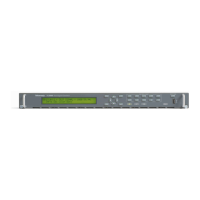
